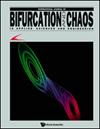Complex Dynamics and Fractional-Order Optimal Control of an Epidemic Model with Saturated Treatment and Incidence
IF 2.3
4区 数学
Q2 MATHEMATICS, INTERDISCIPLINARY APPLICATIONS
引用次数: 0
Abstract
In this study, we have developed a novel SIR epidemic model by incorporating fractional-order differential equations and utilizing saturated-type functions to describe both disease incidence and treatment. The intricate dynamical characteristics of the proposed model, encompassing the determination of the conditions for the existence of all possible feasible equilibria with their local and global stability criteria, are investigated thoroughly. The model undergoes backward bifurcation with respect to the parameter representing the side effects due to treatment. This phenomenon emphasizes the critical role of treatment control parameters in shaping epidemic outcomes. In addition, to understand the optimal role of the treatment in mitigating the disease prevalence and minimizing the associated cost, we investigated a fractional-order optimal control problem. To further visualize the analytical results, we have conducted simulation works considering feasible parameter values for the model. Finally, we have employed local and global sensitivity analysis techniques to identify the factors that have the greatest potential to reduce the impact of the disease.具有饱和治疗和发病率的流行病模型的复杂动力学和分数阶最优控制
在本研究中,我们结合分数阶微分方程,利用饱和型函数来描述疾病的发生和治疗,从而建立了一种新型 SIR 流行病模型。我们深入研究了所提出模型的复杂动态特性,包括确定所有可能的可行均衡的存在条件及其局部和全局稳定性标准。该模型在代表治疗副作用的参数方面发生了向后分叉。这一现象强调了治疗控制参数在形成流行病结果中的关键作用。此外,为了理解治疗在缓解疾病流行和最小化相关成本方面的最佳作用,我们研究了一个分数阶优化控制问题。为了使分析结果更加直观,我们考虑了模型的可行参数值,进行了模拟工作。最后,我们采用了局部和全局敏感性分析技术,以确定最有可能减少疾病影响的因素。
本文章由计算机程序翻译,如有差异,请以英文原文为准。
求助全文
约1分钟内获得全文
求助全文
来源期刊
CiteScore
4.10
自引率
13.60%
发文量
237
审稿时长
2-4 weeks
期刊介绍:
The International Journal of Bifurcation and Chaos is widely regarded as a leading journal in the exciting fields of chaos theory and nonlinear science. Represented by an international editorial board comprising top researchers from a wide variety of disciplines, it is setting high standards in scientific and production quality. The journal has been reputedly acclaimed by the scientific community around the world, and has featured many important papers by leading researchers from various areas of applied sciences and engineering.
The discipline of chaos theory has created a universal paradigm, a scientific parlance, and a mathematical tool for grappling with complex dynamical phenomena. In every field of applied sciences (astronomy, atmospheric sciences, biology, chemistry, economics, geophysics, life and medical sciences, physics, social sciences, ecology, etc.) and engineering (aerospace, chemical, electronic, civil, computer, information, mechanical, software, telecommunication, etc.), the local and global manifestations of chaos and bifurcation have burst forth in an unprecedented universality, linking scientists heretofore unfamiliar with one another''s fields, and offering an opportunity to reshape our grasp of reality.

 求助内容:
求助内容: 应助结果提醒方式:
应助结果提醒方式:


